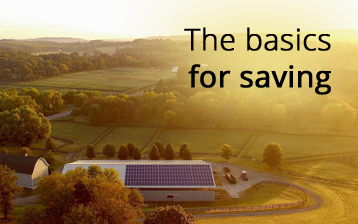The thrust of the EU, from the point of view of climate protection, is leading the various member states to incentivize low environmental impact solutions.
One of the markets that will be highly affected by this change of direction is the one related to residential buildings, both from the point of view of the building envelope and of the energy plants.
The most popular solutions are those related to the use of photovoltaic, heat pumps, solar thermal and thermodynamic systems, that use solar energy to guarantee the energy needs of the home.
However, the reduction in consumption also involves small daily actions and the use of smart devices, such as smart plugs, thanks to which it is possible to control and automate any device or appliance, having in addition a control over the actual consumption of each device (the replacement of old light bulbs with LED bulbs, heaving A++ energy class).
Energy saving in a company
In Italy, many private companies and public bodies, regardless of the geographical area in which they are located or their size, have very high energy costs compared to the European average, even up to 28% more.
During August 2018, a new standard called ISO 50001 was introduced, which has the task of inducing companies to implement a better energy management system based on the following actions:
- overall planning: which consists of an energy analysis, defining an intervention strategy, the performance indicators and finally a series of objectives and direct interventions that allow the achievement of the set results;
- action plan: implementing the defined energy management plans;
- control: monitor and measure the processes and the main characteristics of operations that determine the energy performance, reporting the results achieved;
- action: set up a series of interventions that guarantee a continuous improvement in performance and management system. In a company, of course, there are many viable solutions to save energy.
In “domestic” case
As in the “domestic” case, photovoltaics and intelligent management of systems through home automation are the best known solutions.
It is thought that a house designed to have a zero impact on the environment (nZEB) costs much more than traditional buildings. This is definitely false: the initial investment differential generally pays for itself in 2-3 years of use of the house itself.






